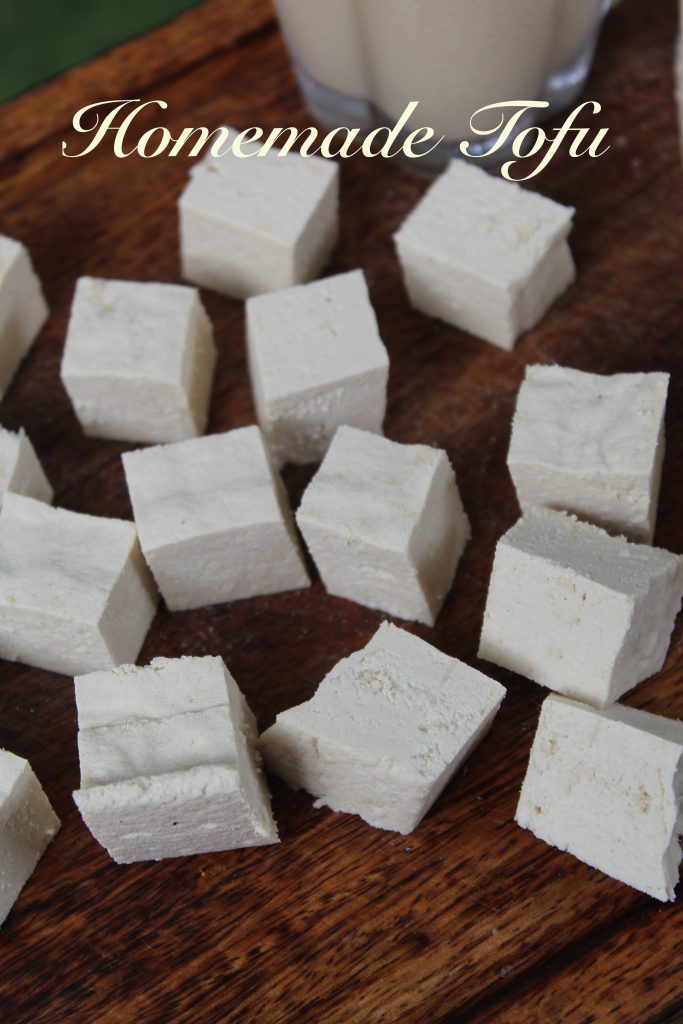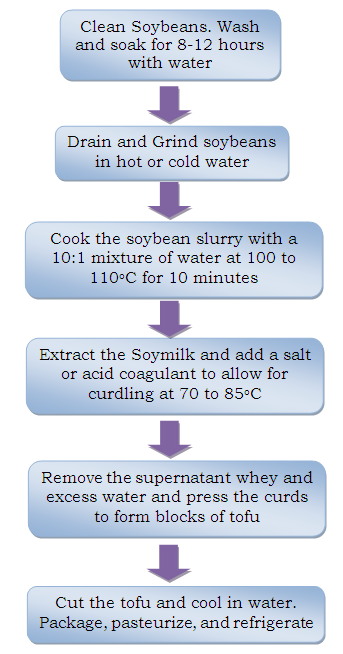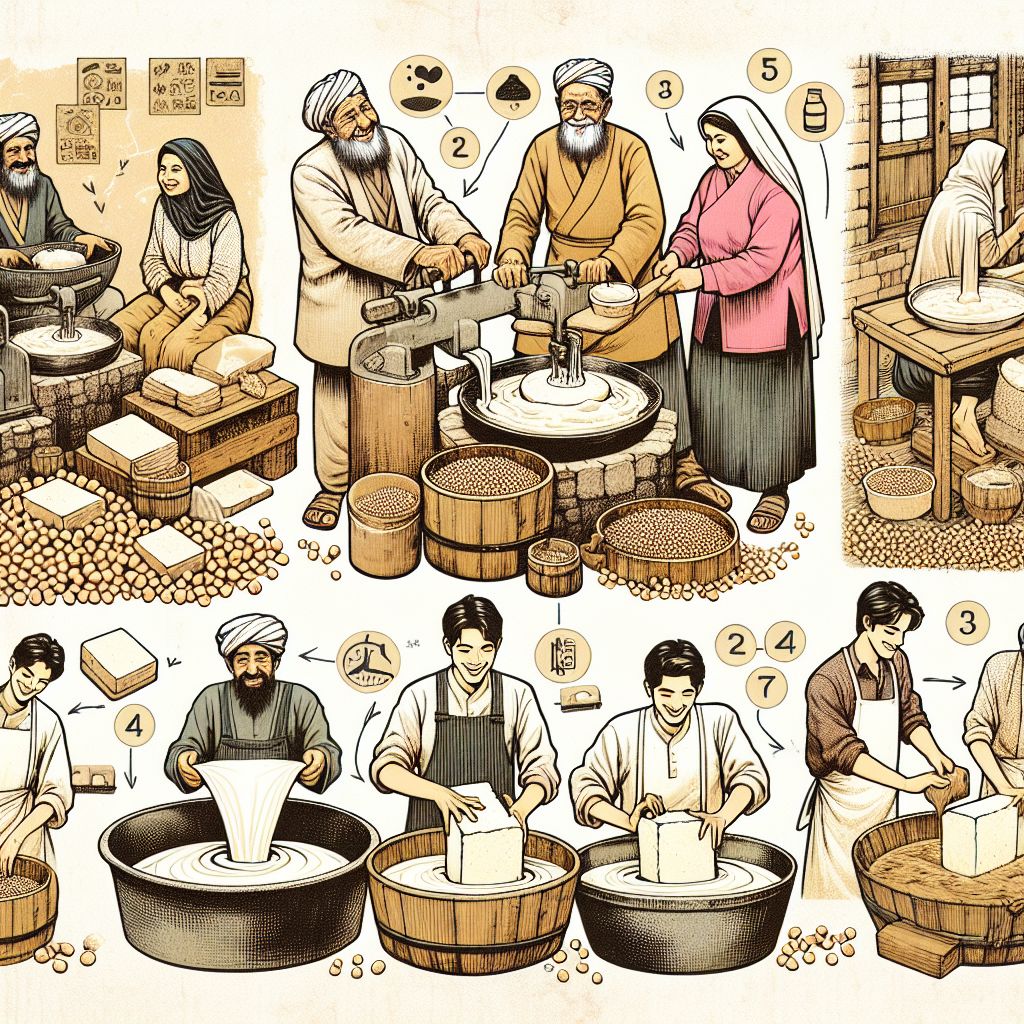Vegetarian cuisine might bring to mind colorful salads or robust veggie burgers. But let’s explore the realm of tofu, a flexible mainstay that can elevate your vegetarian dishes from basic to exceptional. Crafting tofu at home is more than a hobby; it’s a kitchen innovation that delivers both health and gratification.
Before we get started with the actual process of making tofu, let’s go over some of the main points you’ll be learning today. This will give you a brief overview of what to expect and all the tasty possibilities that are in store for you.
Key Points
-
Understanding why homemade tofu often surpasses store-bought tofu in taste and quality.
-
Exploring the health benefits of making your own tofu.
-
Getting to know the necessary ingredients and tools for making tofu.
-
Following a detailed guide on the tofu making process from soybeans to the final block of tofu.
-
Mastering tips for customizing the texture and flavor of your homemade tofu to enhance your vegetarian meals.

“Homemade Tofu Recipe | How to Make Tofu …” from www.yummytummyaarthi.com and used with no modifications.
The Benefits of Making Tofu at Home
Why should you think about making tofu at home? First and foremost, you’re in charge. You can be sure of the quality of the ingredients and adjust the process to your liking. More importantly, homemade tofu is fresher, and you can feel the difference in texture and taste. It’s the clear choice for those who appreciate the true, pure flavor of tofu.
Homemade vs. Store-Bought: A Comparison
While buying tofu from the store is undeniably convenient, these products often contain preservatives and can’t compete with the freshness of homemade tofu. Additionally, making tofu at home gives you the opportunity to experiment with different coagulants, which can change the texture and nutritional value of the tofu. As a result, making tofu at home is not just a cooking project, but a personalized culinary experience.
The Nutritional Perks of Homemade Tofu
Creating your own tofu not only provides a fun cooking experience, but it also provides a nutritional advantage. By making it yourself, you can bypass the extra additives found in store-bought tofu and choose to use organic, non-GMO soybeans. Moreover, the process of crafting tofu at home allows you to keep more of the soybeans’ inherent nutrients.
Assemble Your Tofu Equipment
Now that you know the benefits of making your own tofu, let’s gather the necessary equipment. Don’t worry, you won’t need any special gear to start making tofu at home. Just a few basic kitchen utensils will do the job.
What Do You Need to Make Tofu?
Believe it or not, making tofu only requires two main ingredients: soybeans and a coagulant. The coagulants most often used are nigari (magnesium chloride) or lemon juice. If you prefer your tofu a bit on the firm side, nigari is the way to go. If you’d like a hint of zest in your tofu, try using lemon juice.
Gathering Your Tools
Regarding tools, you’ll require a blender for mashing the soybeans, a big pot for cooking, a cheesecloth or nut milk bag for filtering, and a tofu press for forming and draining your tofu. If a tofu press isn’t in your kitchen arsenal, don’t worry – you can improvise with some hefty books and a few kitchen towels.

“Course:FNH200/2012w Team05 Tofu – UBC Wiki” from wiki.ubc.ca and used with no modifications.
The Tofu Making Process
Making tofu is a process, a fun journey that starts with a simple soybean and ends with a block of tofu that you can call your own. Every step is a chance to connect with your food and see its transformation. For a detailed guide, check out how to make tofu with pictures.
Soaking Your Soybeans: The First Step to Success
Our tofu journey begins with soaking the soybeans. This is a vital step as it softens the beans and makes them blendable. Simply cover them with ample water and let them soak overnight. They’ll puff up, which is exactly what we’re aiming for.
Keep in mind, the journey to excellent tofu begins with patience and attention from this initial soaking phase. Stick around as we continue to reveal the mysteries of tofu-making in the next parts of this guide, where we’ll explore blending, cooking, and the magical conversion of soy milk into tofu.
The Magic of Making Tofu
Deciding to make your own tofu is a game changer for your vegetarian cooking. It’s a craft that requires time and imagination, and the process of turning a soybean into tofu is pretty magical.
Mixing and Heating: Making Soy Milk
Once your soybeans have absorbed water and grown in size, it’s time to mix them with water to make soy milk. This is when the fun really begins. Mix the beans in portions with fresh water until they’re smooth, then pour the mixture into a big pot and heat it until it boils. Make sure to stir often to avoid sticking and burning. Once it’s boiling, turn down the heat and let it simmer. This heating process is crucial because it not only brings out the flavor but also eliminates the raw bean taste.
Coagulation: The Magic of Transforming Soy Milk into Curds
Coagulation is the critical turning point in the tofu-making process. This is when your soy milk goes from being a liquid to forming curds and whey. Dissolve your selected coagulant in water and carefully stir it into the hot soy milk. Then, watch in awe as the curds start to form. Be gentle during this step; the softer your approach, the smoother your tofu will turn out. For those interested in self-sufficient living, understanding these useful survival skills can be incredibly beneficial.
Forming and Squeezing: Crafting Your Tofu
After your soy milk has solidified, it’s time to form and squeeze the curds into tofu. Line your tofu mold with cheesecloth, pour in the curds, and fold the cloth over the top. Press down with a weight to squeeze out extra water. The longer you squeeze, the harder your tofu will be. If you like soft tofu, a short squeezing time will be enough. After squeezing, your tofu is ready to be taken out of the mold and put into cold water to harden.
Creating tofu at home can initially seem intimidating, but the experience is ultimately fulfilling. As you become comfortable with the process, you’ll start to feel like a real craftsman, creating a product that is truly your own.
We’ll simplify the process with a comparison to help you understand how it changes:
Soaking: The soybeans take in water, growing in size and becoming softer, which is necessary for the following step. For those interested in urban prepper survival strategies, this is a crucial skill in preparing plant-based proteins.
Mixing: The softened soybeans are mixed with water to create a smooth, milky liquid – your base for tofu.
Cooking: Warming up the soy milk not only makes it taste better, but it also stops enzymes from working and gets the milk ready for coagulation.
Coagulation: By adding the coagulant, the milk is separated into curds and whey. This is the first step in making tofu.
Squeezing: The curds are squeezed to remove water and shape the tofu, with the squeezing time determining the texture.

Mastering the Art of Tofu Making
Now that your tofu is pressed and ready to be cooked, it’s time to take a deeper dive into the intricacies of texture and taste that can elevate your tofu from just okay to amazing. As a vegetarian prepper, these skills will not only make your meals more delicious but also increase your love for the food you make.
-
Learning how to coagulate to achieve various textures
-
Perfecting the technique of pressing to get the firmness you want
-
Trying out different marinades and seasonings to enhance the flavor
Once you’ve mastered these skills, you’ll be able to make tofu that’s tailored to your taste and the dishes you’re preparing. Whether you want a soft, silken texture for soups or a firm, chewy texture for stir-fries, you’ll be in control.
But that’s not all. Once you’ve got the basics down, it’s time to dive into the endless possibilities that homemade tofu provides. Try infusing your tofu with herbs, spices, or even puréed vegetables for added nutrition and a pop of color. You’ll be surprised at how versatile this vegetarian mainstay can be.
The Inside Scoop on Creating Silky Tofu
If you’re a fan of silken tofu’s soft, creamy texture, the secret to recreating it at home lies in the coagulant and the curdling process. Use less coagulant and mix it gently into the soy milk to stop big curds from forming. This delicate touch will give you a smoother, silkier tofu.
Getting the Right Texture
If you like your tofu to be a little chewier, the key is in how long you press it. The more you press your tofu, and the longer you do it, the chewier it will get. If you want really chewy tofu, press it for at least half an hour, and if you want it to be extra chewy, press it for more than an hour. For those interested in more urban prepper survival strategies, understanding food preparation is key.
Injecting Taste: Personalizing Your Tofu
Creating tofu at home is similar to having an empty canvas, waiting to soak up any tastes you add. Let your tofu soak in a blend of soy sauce, garlic, ginger, and your preferred seasonings for a couple of hours before you cook it. This not only enhances the taste but also helps to harden the outside of the tofu, providing it with a wonderful texture contrast.
Don’t forget, the magic of tofu is in its simplicity and its versatility to take on any flavor you can dream of. So feel free to play around and let your cooking imagination soar!
Cooking with Homemade Tofu: New and Exciting Recipes
Now that you’ve perfected the craft of creating tofu in your own kitchen, it’s time to put your homemade masterpiece to the taste test. The adaptability of tofu makes it an excellent addition to a variety of meals. You can pan sear it to a beautiful golden brown, blend it into your morning smoothie for an extra kick of protein, or crumble it up and use it as a replacement for scrambled eggs. The sky is the limit when it comes to cooking with tofu.
Here are a few creative recipe ideas to help you begin:
-
Spicy Tofu Tacos: Break down your tofu into crumbles and sauté it with your favorite taco seasoning, then pile it onto tortillas with fresh salsa and avocado.
-
Tofu Chocolate Mousse: Blend silken tofu with melted dark chocolate, a hint of maple syrup, and a dash of sea salt for a rich dessert.
-
Grilled Tofu Skewers: Marinate cubes of firm tofu in a blend of soy sauce, garlic, and sesame oil before grilling them to perfection.
With homemade tofu, you’re not just a cook; you’re a flavor artist, a texture designer, and a kitchen innovator.
From the Cupboard: Innovative Ways to Use Leftover Soy Pulp (Okara)
Once you’ve made tofu, you’ll be left with a by-product known as okara – the nutrient-dense soy pulp left behind. It’s full of protein and nutrients, making it too good to throw away. Rather than getting rid of it, use okara to add a healthy kick to a variety of meals.
Here are some innovative ways to incorporate okara:
-
For extra fiber, mix it into your bread or muffin recipes.
-
Use it as a thickening agent in soups or stews.
-
Form veggie burger patties by combining it with vegetables and spices.
Okara embodies the zero-waste philosophy that can inspire us all. By using every part of the soybean, we’re not only being resourceful but also showing respect to the food we consume.
“Every bit of okara is a chance for a culinary breakthrough. It’s more than just a byproduct; it’s a call to exercise kitchen creativity.”
Commonly Asked Questions
When you start making tofu at home, you’re likely to have some questions. Here are answers to some of the most common questions people have about making tofu at home.
What is the Shelf Life of DIY Tofu?
DIY tofu can be kept in the fridge for up to a week. Store it in a sealed container filled with water, and replace the water every day to keep it fresh. If you detect a sour odor or see any changes in color, it’s time to toss it and whip up a new batch.
Do I Need Nigari to Make Tofu?
Often used in traditional tofu recipes, Nigari, or magnesium chloride, is a coagulant that helps to give tofu its firm, smooth texture. While it’s not the only coagulant you can use to make tofu, many tofu lovers believe it gives the best results. If you don’t have Nigari, you can use lemon juice or vinegar instead, but keep in mind that this will change the texture and flavor of your tofu.
Is it Possible to Create Tofu Without Any Special Tools?
Definitely! Though a tofu press can be useful, it’s not a necessity. You can create your own press using a couple of heavy books and a chopping board. The key is to be able to apply consistent pressure to get rid of excess water. Use whatever you have around the house and make it work for your needs.
Keep in mind, the secret to making great tofu isn’t the tools you use, but the skill and care you put into the process.

What Are Some Typical Errors to Avoid When Creating Tofu?
Creating tofu is straightforward, but there are a few traps to be aware of:
-
Not allowing the soybeans to soak for a sufficient amount of time can result in tofu with a grainy texture.
-
Overcooking the soy milk can give your tofu a burnt flavor.
-
If you stir the coagulant too vigorously, you can end up with tofu that has a rough texture.
-
Pressing the tofu unevenly can lead to inconsistent firmness.
By steering clear of these common pitfalls, you can ensure that your homemade tofu is perfect every time.
Does Making Tofu at Home Contribute to Sustainability?
Yes, making tofu at home is more sustainable than purchasing it from the store. Opting for organic, non-GMO soybeans and cutting down on packaging waste can make a big difference for the environment. Plus, when you make tofu at home, you can use every part of the soybean, which means no waste.
Thus, by deciding to make your own tofu, you’re not just giving yourself a treat – you’re also doing your part to create a more sustainable planet.
Now that you’ve got the know-how and the motivation to make your own tofu, there’s only one thing left to do: get to it! Enjoy the journey, relish the outcome, and above all, let your vegetarian imagination run wild. And if you’re keen to delve deeper into vegetarian cuisine and the magic of tofu, explore urban prepper culinary strategies that await you in your own kitchen.
Creating Your Own Tofu: At-Home Vegetarian Prepper Cuisine Innovations


